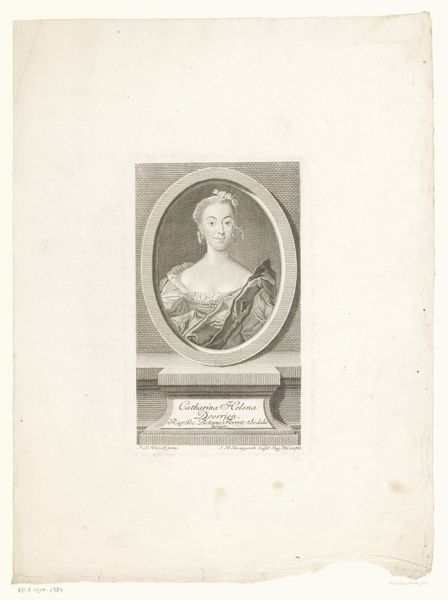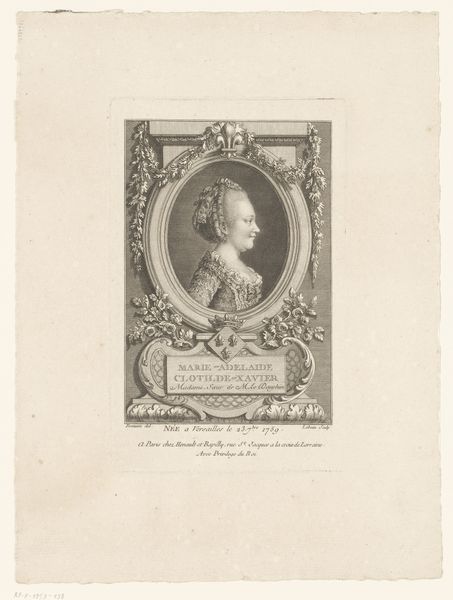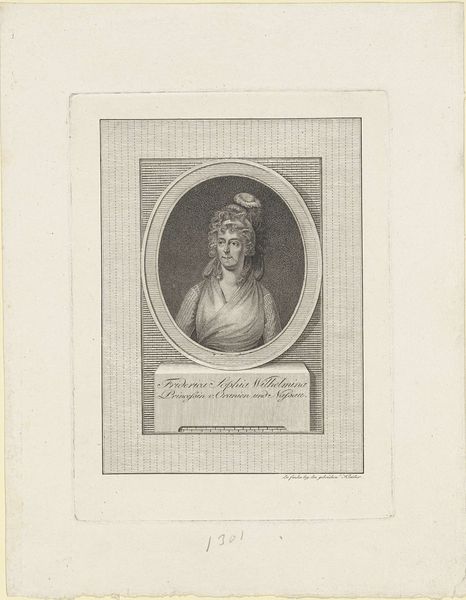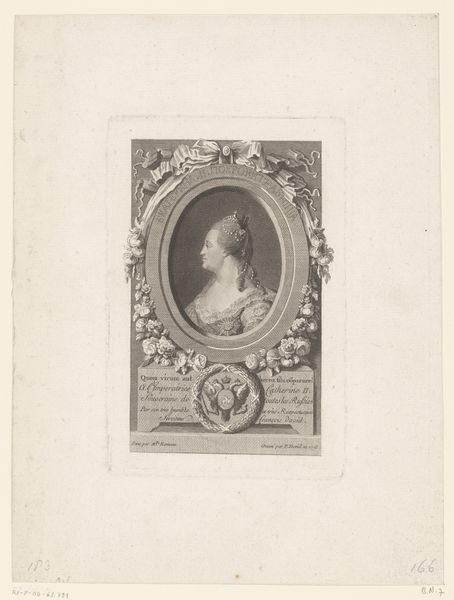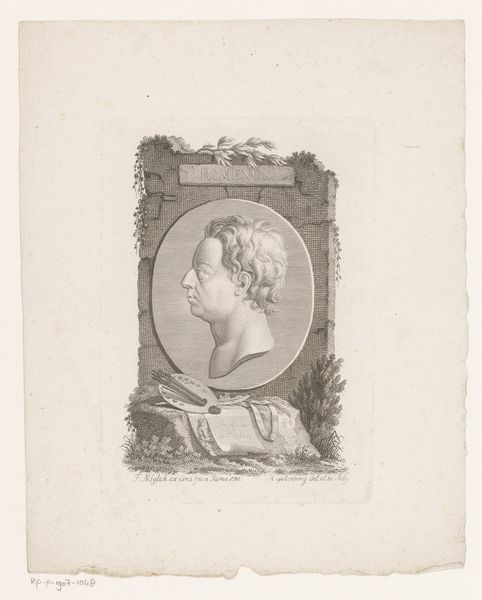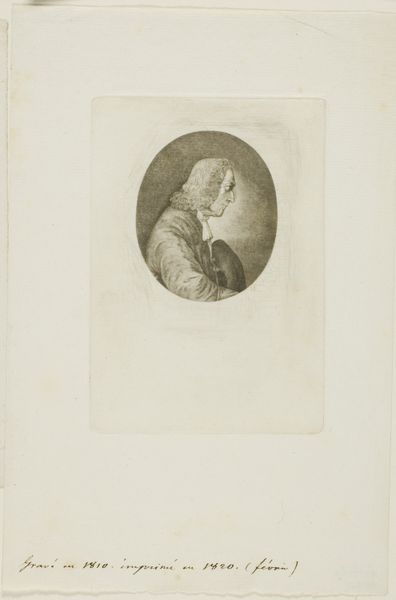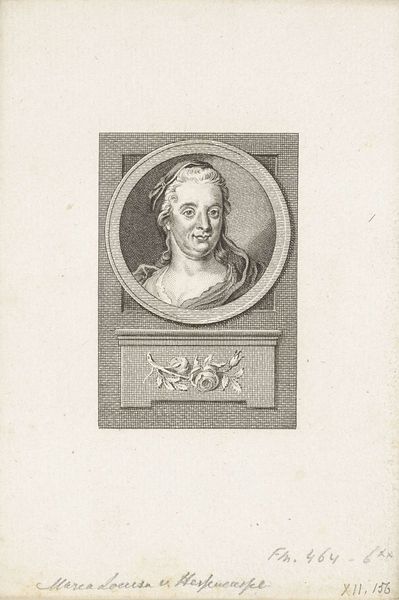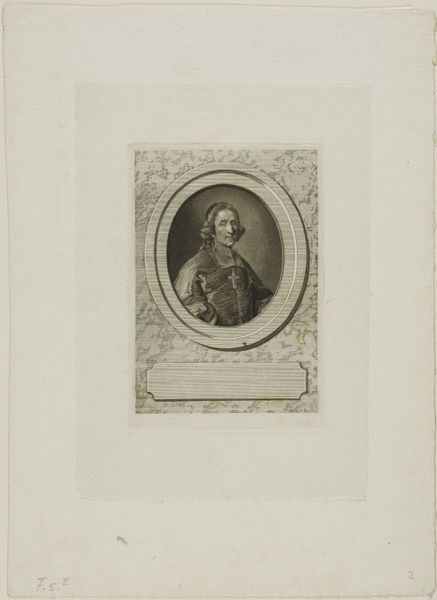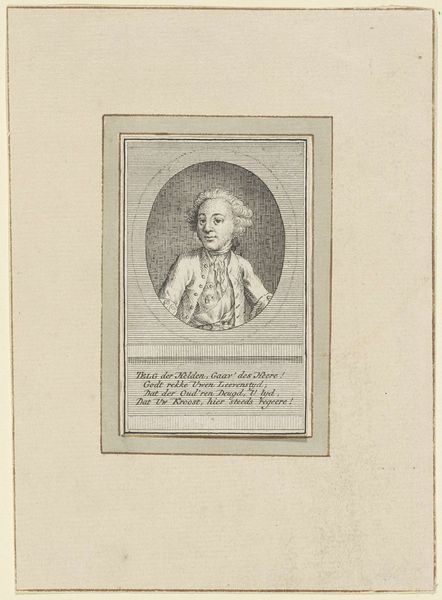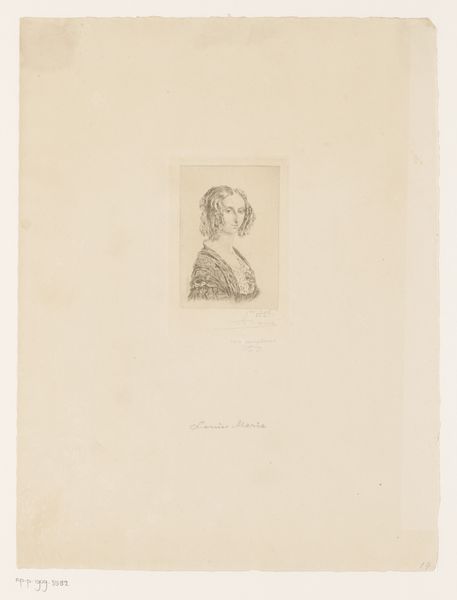
paper, engraving
#
portrait
#
neoclacissism
#
old engraving style
#
paper
#
historical fashion
#
line
#
engraving
Dimensions: height 156 mm, width 113 mm
Copyright: Rijks Museum: Open Domain
Reinier Vinkeles created this portrait of Margaretha Coppier using engraving, a printmaking technique, sometime in the late 18th century. The process begins with a metal plate, usually copper. The artist uses a tool called a burin to carve lines directly into the plate's surface. These lines create grooves that hold ink. Once the image is fully engraved, the plate is inked, and then wiped clean, leaving ink only in the incised lines. Paper is then laid on the plate, and both are run through a printing press. The pressure forces the paper into the inked grooves, transferring the image. The resulting print shows fine lines and details, all achieved through the engraver's skill and labor. Consider the implications of this reproductive technology. Unlike a unique painting or drawing, engravings can be editioned and widely disseminated. This made images more accessible to a broader audience. But the process also reflects a division of labor inherent to a growing capitalist economy: Vinkeles was a skilled technician, and images like this satisfied a demand for portraits among the rising middle class.
Comments
No comments
Be the first to comment and join the conversation on the ultimate creative platform.
